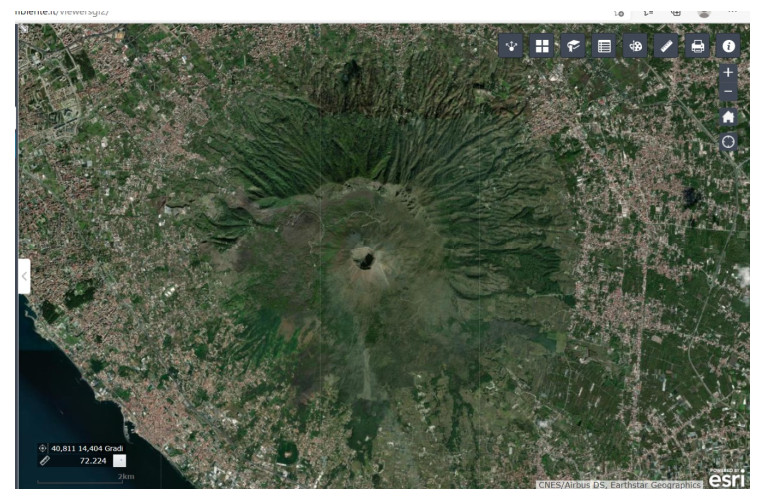|
[1]
|
Dougherty PH (2012) Introduction to the Geographical Study of Viticulture and Wine Production. In: Dougherty PH (eds), The Geography of Wine. Springer, Dordrecht.
|
|
[2]
|
Sommers BJ (2008) The Geography of Wine: How Landscapes, Cultures, Terroir, and the Weather Make a Good Drop. Plume, New York.
|
|
[3]
|
Cita MB, Chiesa S (2002) Geology of italian wines. A book, an idea. Proceedings "Spaces, environments and landscapes of terroirs", Torino, IAG, Working Grourp on Terroirs viticoles, BEM, 36–42.
|
|
[4]
|
Lugeri FR, Farabollini P, Amadio V, et al. (2018) Unconventional Approach for Prevention of Environmental and Related Social Risks: A Geoethic Mission. Geosciences 8: 54. doi: 10.3390/geosciences8020054

|
|
[5]
|
Lugeri FR, Farabollini P (2018) Discovering the Landscape by Cycling: A Geo-Touristic Experience through Italian Badlands. Geosciences 8: 291. doi: 10.3390/geosciences8080291

|
|
[6]
|
Tomić N, Koković J, Jakšić D, et al. (2017) Terroir of the Tri Morave Wine Region (Serbia) as a Basis for Producing Wines with Geographical Indication. Geogr Pannonica 21: 166–178. doi: 10.5937/GeoPan1703166T

|
|
[7]
|
Gregori L (2007) La cartografia "emozionale" dei paesaggi del vino. La Cartogr 14: 14–29.
|
|
[8]
|
Lugeri FR, Amadio V, Bagnaia R, et al. (2011) Landscapes and Wine Production Areas: A Geomorphological Heritage. Geoheritage 3: 221–232. doi: 10.1007/s12371-011-0035-z

|
|
[9]
|
Gregori L (2009) Winescapes e geositi in Umbria. I paesaggi del vino di Goethe. Proceedings "I paesaggi del vino 5" Trevi 5: 29–30.
|
|
[10]
|
Gregori L (2004) Percorsi geoturistici ed enografici in Umbria. In Atti 2℃onvegno Geologia & Turismo "Opportunità nell'economia del paesaggio", Bologna, 58–60.
|
|
[11]
|
Turner MG, Gardner RH, O'Neill RV (2001) Landscape Ecology in Theory and Practice: Pattern and Process. Springer, New York.
|
|
[12]
|
Forman RTT (1995) Land Mosaics: The Ecology of Landscapes and Regions. Cambridge Universiy Press. Cambridge, UK.
|
|
[13]
|
Troll C (1950) Die geografische Landschaft und ihre Erforschung. In Bauer KH, Curtius L, Einem HV, et al. (eds), Studium Generale, Springer, Heidelberg, 163–181.
|
|
[14]
|
Forman RTT, Godron M (1986) Landscape ecology. John Wiley and Sons, NewYork.
|
|
[15]
|
Associazione Geologia e Turismo (2008) WineGIS. Available from: http://www.winegis.it/winegis_gfmaplet/?map=%22uso%20del%20suolo%22.
|
|
[16]
|
Lugeri FR, Farabollini P, Lugeri N (2019) Landscape analysis as a tool for risk reduction. AIMS Geosci 5: 617–630. doi: 10.3934/geosci.2019.3.617

|
|
[17]
|
European Environment Agency (2018) Available from: https://land.copernicus.eu/pan-european/corine-land-cover/clc2018.
|
|
[18]
|
Serres O (1600) Théâtre d'agriculture des champs. Paris 1600. Édition N° 19–1675, Lyon, chez Mathieu Libéral, Antoine Beaujollin, Jean-Baptiste Deville, Jean Bruyset, Claude Bachelu, Jean Carteron, 902.
|
|
[19]
|
Marre A (2004) Existe-t-il des terroirs viticoles en Champagne? Rev Géogr Est 44: 17–30. doi: 10.4000/rge.994

|
|
[20]
|
Biancotti A (2002) Physical geography's contribution to studying. Spaces, environments and landscapes of terroirs. IAG, Working Group on Terroirs viticconveg.
|
|
[21]
|
Vaudour E (2005) Terroir. Definizioni, caratterizzazione e protezione. Edagricole.
|
|
[22]
|
Ente Parco Nazionale del Vesuvio (2010) Il Vulcano. Available from: www.parconazionaledelvesuvio.it.
|
|
[23]
|
Maresca M (2008) Caratteristiche Del Terreno Vulcanico E Tecniche Di Coltivazione. Available from: http://www.i-park.it/caratteristiche-del-terreno-vulcanico-e-tecniche-di-coltivazione/.
|
|
[24]
|
Blumemberg H (1985) Naufragio con spettatore: paradigma di una metafora dell'esistenza. Bologna: il Mulino.
|
|
[25]
|
Chevrel Y (1991) La letteratura comparata. Carocci Roma.
|
|
[26]
|
Curi R (1988) Teoria delle catastrofi. interviste. EMSF RAI.
|
|
[27]
|
INGV (2008) Il sistema di sorveglianza dell'Osservatorio Vesuviano non evidenzia variazioni significative nello stato di attività del Vesuvio. Available from: https://www.ov.ingv.it/ov/it/vesuvio.html.
|
|
[28]
|
Gugg G (2018) Anthropology of the Vesuvius Emergency Plan: history, perspectives and limits of a dispositive for volcanic risk government. In Antronico L, Marincioni F (eds), Natural Hazards and Disaster Risk Reduction Policies, Geographies of the Anthropocene, 1: 105–123.
|
|
[29]
|
Dobran F, Neri A, Todesco M (1994) Assessing the pyroclastic flow hazard at Vesuvius. Nature 367: 551–554. doi: 10.1038/367551a0

|
|
[30]
|
Servizio Geologico d'Italia (2003) Carta geologica del Vesuvio. Progetto CARG Dip. Servizio Geologico d'Italia.
|
|
[31]
|
Somma G (2012) Vini: Conoscere e riconoscere i vini, i vitigni, le uve e le cantine migliori d'Italia. De Agostini.
|
|
[32]
|
UNESCO (2003) Available from: http://www.unesco.it/it/RiserveBiosfera/Detail.
|
|
[33]
|
Strabone (14–23A.D.) Geografia. Libri 1-4 Italia. A cura di A. M. Biraschi. Collana Classici Greci e Latini, BUR Rizzoli 1988 Milano.
|
|
[34]
|
Aragona D (2001) I vini d'Italia. Conoscerli, degustarli, abbinarli. Hoepli.it, 114.
|
|
[35]
|
Pellizzoni L, Osti G (2003) Sociologia dell'ambiente. Bologna, Italy: Il Mulino.
|




















 DownLoad:
DownLoad: